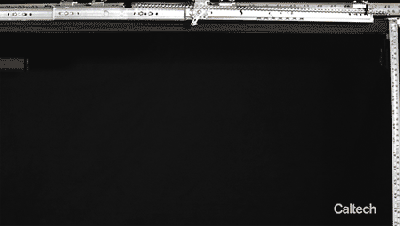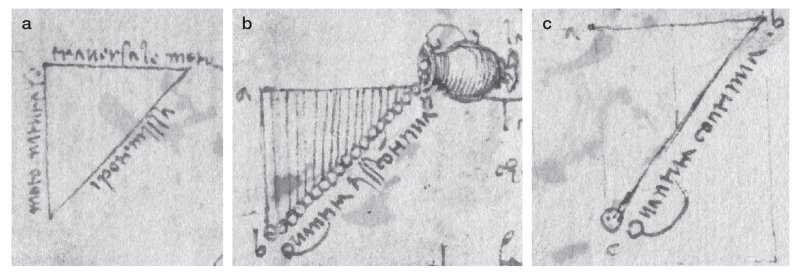Although we take a lot of scientific knowledge for granted today, each of the basics – whether it be about light, gravity, mass or the shape of the Earth – had to be theorized and experimentally verified. In the case of gravity, as far back as around 500 BCE the Ionian Greek philosopher Heraclitus theorized on the balance created by what we came to call ‘gravity’. Later, the Greek philosopher Aristotle coined his own postulations and Greek physicist Archimedes did research that led him to discover the center of mass. Centuries later, the Roman engineer and architect Vitruvius argued for the concept of specific gravity rather than mass alone.

Although scientific pursuits in this area ground to a halt in Europe during medieval times, the Renaissance saw a renewed interest in the topic, with newly published research performed on Leonardo da Vinci‘s notes showing that he appears to – unsurprisingly – have also created a number of experiments aimed at determining the properties of gravity. One of the major limitations of the 15th century was that many of the basic scientific tools we have come to rely on since the 19th century such as accurate clocks, along with many other products of advanced alloys and metallurgy simply did not exist. Da Vinci’s experiment in this context is nothing if not ingenious in its simplicity.
By the time of the European Renaissance, the Aristotelian concept of gravity as solely a factor of an object’s mass was dismissed by many in favor of a model that saw the motion of an object affected by its velocity and mass, also influenced by works published by Persian scholars. When Da Vinci set up his experiment, he focused specifically on the acceleration of the falling objects by pouring a large number of granules or possibly water droplets from a pitcher which was being pulled along a straight path. He theorized that if the pitcher was being accelerated at the same rate as the objects are accelerating due to gravity, it’d create a isosceles right triangle.
When the researchers ran his experiment and compared Da Vinci’s notes on the results, they realized that although he had made a mistake in his model, at the small scale this would not have affected the results, making it valid and an early precursor to what later be published by Isaac Newton in the 17th century.
















If you spin them fast enough do they fly upwards?
You do know modern constructs of the propeller blade is modeled after a breaking Maple leaf..? If you curve the blades and put them in a centripetal spin of course.
He was either, a good observer or genius. Hard to tell.
Isn’t one necessairly linked to the other?
Probably yes.
I have seen research paper stated he was a bit sarcastic also.
One, Often the sign of the other
I’m Ted is dead. Nice to greatly be of high favoritism. Sincerely not sarcastically 🙏💯⚛💅💖
Science requires that we double check everything…Even if some centuries have passed the original experiments. Why? It is not just the scientific method, but a check of, for want of a better term ‘drift’. In other words a way to look for errors, in thought, methodology, instrumentation.
“Da Vinci’s experiment in this context is nothing if not ingenious in its simplicity.”
Something citizen scientists can keep in mind.
Hipparchus and Strato already ran experiments on gravity in antiquity, but their treatises are lost. In the commentaries, Strato made experiments on dropping pebbles into sand and observed that the greater the height, the bigger the crater, therefore it must have been falling faster. These guys were working to investigate the matter for artillery purposes, so they must have known quite a bit. They knew the effects of mass, density, force, acceleration and air resistance.
What’s left of their writings though comes through Aristotelian apologists who used sophistic arguments to prove that everything they knew was wrong and Aristotle was right.
And quite ironically, Galileo also used sophistic arguments and fallacies to “prove” that Aristotle was wrong – which is part of the reason he got locked up in the tower. Not because he was contradicting Aristotle, but because he was an insufferable crank. Still, a broken clock can be right twice a day.
Galileo got mistreated because a particular individual came into power and that person didn’t like him. As it is with everything groups of humans do it came down to little more than power and politics.
Not quite. He wasn’t quite as it seems
https://intellectualmathematics.com/blog/the-case-against-galileo-s01-overview/
The podcast (in text and audio), goes to lengths to show that despite his emphasis on empirical studies in science, Galileo was basically a hack who supported many wrong results, claims and theses, with stolen valor, sophistics and plain false logic. He got things wrong where his contemporaries got it right, and used faulty experiments – some entirely made up – to prove himself “correct”, and failing so, he simply attacked his peers to intimidate them.
“…the cycloid episode is typical of Galileo’s science altogether. As with the cycloid, so with science. Galileo was bad at mathematics. And it is precisely because he was so bad at mathematics that he was so keen on experiments. He was not a pioneer of scientific method. He was not the father of modern science. He was not a heroic knight defeating dogmas and superstitions with the light of empirical truth. No, he was none of those things. Galileo was, first and foremost, a failed mathematician. This is the key to understanding his role in the history of science, in my opinion.”
And: “Galileo and the Church”
“Galileo’s sentencing by the Inquisition was avoidable. The Church had no interest in prosecuting mathematical astronomers, but since Galileo had so little to contribute in that domain he foolishly got himself involved with Biblical interpretation. His scriptural interpretations not only got him into hot water: they are also scientifically unsound and blatantly inconsistent with his own science.”
Yes, Galileo made a lot of mistakes.
That’s the point: he was a scientist and his results generates the ripple that then became modern science.
Huygens, Newton and Kepler had to confute and works on the noise that Galileo works did to the culture of the time.
He was not a great mathematician, but he had intuition. And if this doesn’t make him a great math, the print he left on human history is true
Um, if you look at his drawings, you can see that he got it wrong. The video shown in the article shows how wrong he got it. Leonardo’s drawing shows the objects falling at constant velocity — they are in a straight line. The video shows them forming a parabola, not a straight line. If you’ve ever made graphs of position versus time for moving objects, you can instantly see that Leonardo was wrong.
Nevertheless, he was one of the greatest geniuses in history.
The point is, it’s very easy to confuse the two unless you have a slow-mo camera because at this scale they look much alike.
The difficulty for DaVinci would be in controlling the acceleration and motion of the pitcher accurately, so he could have made the experiment and easily concluded that the difference was an artifact of the experiment. His results would have been a lot messier than this.
This is what often happens in science – expectation bias is strong when the results are ambiguous.
It’s easy to see that a parabola should have formed but he put it as a right-angle triangle. The model had errors in data, like they said, but method and model would otherwise be sound. Hell, if the lateral motion matches that of gravity, the grains would fall as a straight line if the drop interval is close enough. Da Vinci might have hit upon the log function long before Napier.